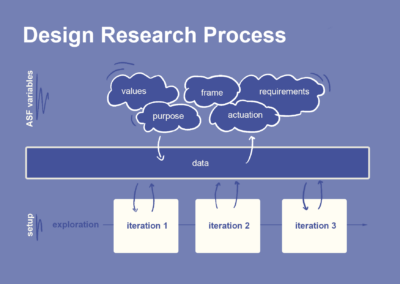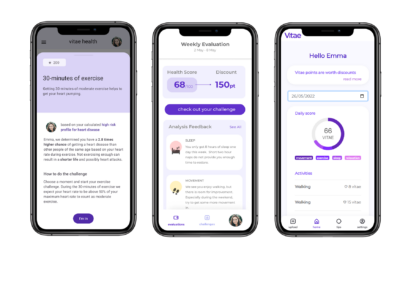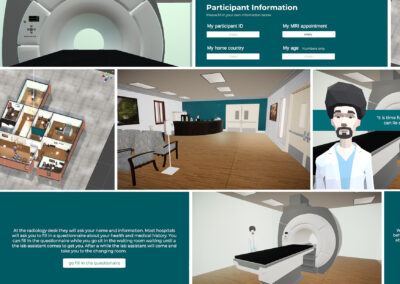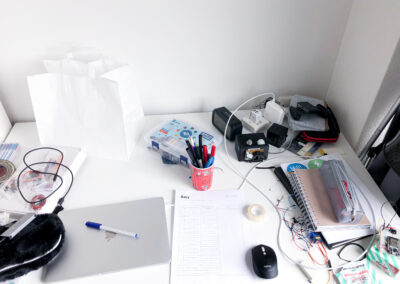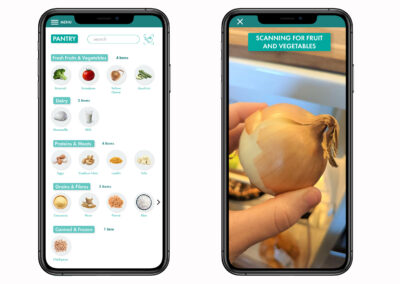My name is Chantal Vriens. I am an UX designer that enjoys researching data and AI-based product interactions. Trying to make product innovation that is both enjoyable and meaningfull.
To achieve this I combine the ability to perform user research with interactive prototyping skills and knowledge on technology. I can design, perform user research, create prototypes and set-up design experiments.
A situated exploration of generative prototyping for AI in the insurance behavior tracking context
With the growing impact of AI-based interactions on our lives, the need to design AI applications that behave as intended has been established. The question that remains now is how? The challenge for my design research project was to perform a case study on designing an AI-based interaction using the theoretical adaptive solutions framework (ASF) in the context of health insurance behavior tracking applications.
Based on the approach described in the theoretical framework, I developed a series of three prototyping iterations. Each continues on the previous insights and adds some functionality. The final prototype is a web application that allows users to interact remotely with the fictional algorithm outcomes. The prototypes were thus used as a tool for physicalisation, to help talk about what intended means in for AI development in this context. The value of the project was found in combining practically implementable insights for creating more responsible insurance behavior tracking applications with strategic considerations for further framework development.
Graduated with cum laude distinction (9/10)
2022 | DEUS ~ human(ity) centered AI
Responsible AI | Research-Through-Design | Generative Prototyping | Web Application | Mock-ups | Figma
Creative data-collection on patient stress levels through a gamified MRI preparation experience
In this design project I explored designing for creative and human data collection through making an MRI preparation experience. The idea was that combining gamified preparation and data collection could be valuable tools in improving the patients MRI experience. However, the question became if and how the gamified experience could influence collected anxiety data?
To test this I setup a comparative study to measure the influence of gamified and traditional data collection interfaces on data collection of patient stress levels. For both conditions I develop a highly interactive prototype from scratch. The prototypes were connected to a database which collected user data in the background and allowed to perform the experiment remotely. The experiment helped to show how the gamified experience improved the user experience while not influeing the data collection on patient stress levels.
Awarded an excellent and currently under progress for a research paper submission.
2021 | Philips
Design Experiment | Data Collection | Gamification | MRI | Healthcare | Unity | Web Development
Exploring the working from home environment through sensor and qualitative data
With the arrival of COVID-19, many office workers switched up their regulated office environment for a working-from-home (WFH) environment. Existing studies show how work environment influences productivity, so we wanted to re-explore the relationship between environment and productivity while specifically looking at the home office. To do so, my project team and I used the data-enabled design approach, which uses design probes to collect data in context.
Our initial design cycle showed that office workers have little understanding of air quality regulations in their own workspace. Thus in our second iteration, we aimed to provide users with these insights through a live-data dashboard. Within the project, I mostly worked on analyzing our data to gather insights and I developed the functional data dashboard. The deployment of the dashboard helped us showcase the value of further developing new tools that help employees regulate their home-office environment using real-time sensor insights.
2021 | Data-enabled design
Data-enabled Design | Data Collection | Web Development | Data Visualisation | Tableau | Miro | Arduino | Sensors
AI-driven recipe recommender system focussed on tackling food waste through ingredient reuse
In this team project, we focused on the conceptual design of an artificial intelligence (AI)-application to solve a challenge of our choice. After ideation sessions, my team decided to focus on AI’s potential to help tackle food waste. We saw a potential AI-based sollution for common issues like lack of improvisation skills in cooking and poor ingredient storage management. Our aim became to create a concept that allowed users to get their favorite recipe(s) while maximizing the number of pantry ingredients used and minimizing the amount of effort.
Our design process consisted of multiple iterations. The first phase utilized third-party APIs to collect personal information, contextual data, and user interaction data. Through Weka, different machine learning algorithms were employed on the collected data to establish a prediction model suitable for integration in the final interactive application. The insights were combined in the last interaction prototype. The iterative design process helped us see the value and difficulties of synchronizing design decisions with data collection and model development.
2021 | Designing with advanced Artifical Intelligence
Invision | Processing | Weka | Artificial Intelligence | Food waste | Design Concept

